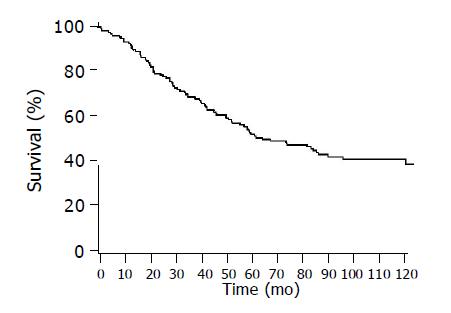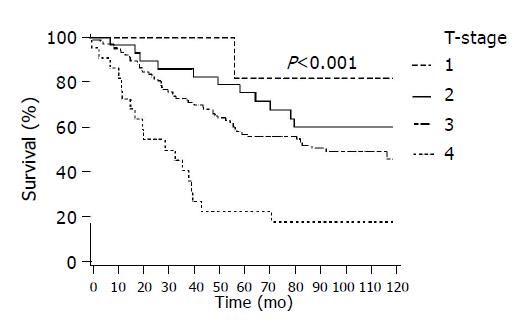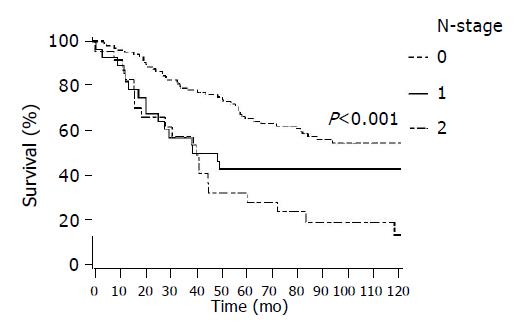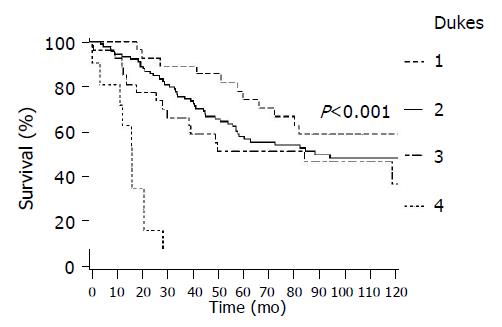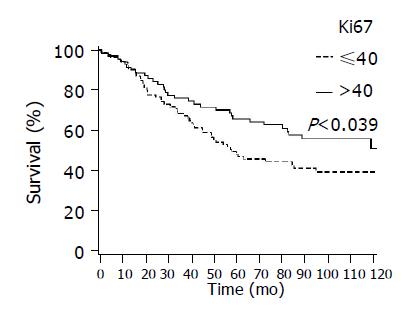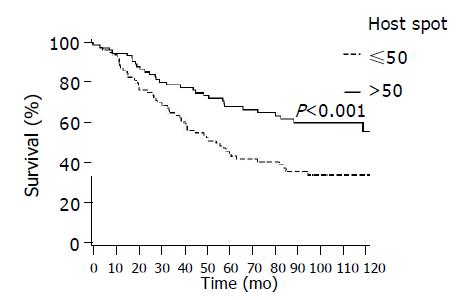Copyright
©2005 Baishideng Publishing Group Inc.
World J Gastroenterol. Jun 7, 2005; 11(21): 3245-3249
Published online Jun 7, 2005. doi: 10.3748/wjg.v11.i21.3245
Published online Jun 7, 2005. doi: 10.3748/wjg.v11.i21.3245
Figure 1 Kaplan-Meier survival curve for the whole patient population (n = 146).
Five-year median survival 53%, 10-year survival 41%.
Figure 2 Kaplan-Meier survival by UICC 1997 T-stage (T1 n = 6, T2 n = 26, T3 n = 94, T4 n = 20).
Figure 3 Kaplan-Meier survival by N-stage, N0 = no lymph node metastases (N0 n = 98, N1 n = 26, N2 n = 22).
N1 = documented lymph node metastases, 2 = NX, lymph node status undefined.
Figure 4 Kaplan-Meier survival by Dukes stage (Dukes A n = 26, Dukes B n = 85, Dukes C n = 25, Dukes D n = 10).
Figure 5 Kaplan-Meier curve for risk of death for all patients by expression of Ki67 (n = 146), cut-off level 40% (≤40 n = 80, >40 n = 66).
Figure 6 Kaplan-Meier curve for risk of death for all patients by expression of Ki67 hot spot areas, cut-off level 50% (≤50 n = 75, >50 n = 71).
- Citation: Salminen E, Palmu S, Vahlberg T, Roberts PJ, Söderström KO. Increased proliferation activity measured by immunoreactive Ki67 is associated with survival improvement in rectal/recto sigmoid cancer. World J Gastroenterol 2005; 11(21): 3245-3249
- URL: https://www.wjgnet.com/1007-9327/full/v11/i21/3245.htm
- DOI: https://dx.doi.org/10.3748/wjg.v11.i21.3245













